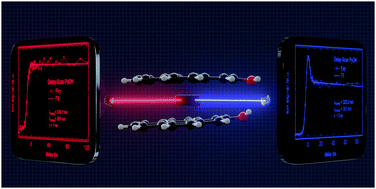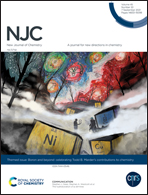Isolated 2-hydroxypyrene and its dimer: a frequency- and time-resolved spectroscopic study†
Abstract
We investigated isolated 2-hydroxypyrene and its dimer in the gas phase by time- and frequency-resolved photoionisation with picosecond time-resolution. The experiments are supported by simulations that include an extensive conformational search based on the machine learning ANI-1ccx neural network potential combined with automatic structure classification using a data clustering algorithm. Vibrationally resolved spectra of the S1 ← S0 and S2 ← S0 transitions are reported which are in very good agreement with the simulated spectra at the TDDFT level. As expected from the molecular orbitals involved in the transitions, the red-shifts of the transitions are more pronounced for the S1 state compared to those of unsubstituted pyrene. While a ns-lifetime is observed for the S1 state, the lifetime decreases to 3 ps or less for the origin of the S2 state, indicating a strong interaction between the two states. For the dimer, a slightly V-shaped structure was computed, and intermolecular interactions are dominated by dispersion rather than hydrogen-bonding. The highest oscillator strength was computed for the transition to the S4 state, which deactivates within 4 ps to a lower-lying excited state.

- This article is part of the themed collection: Boron & Beyond - in celebration of Todd Marder


 Please wait while we load your content...
Please wait while we load your content...